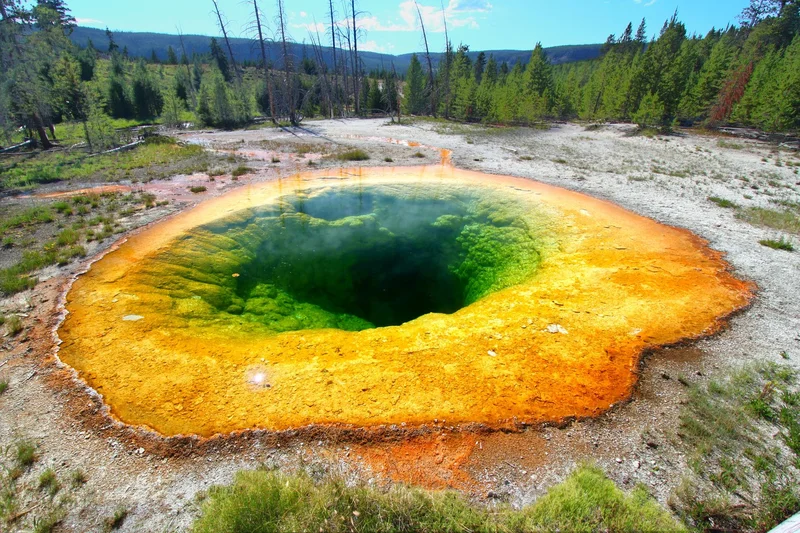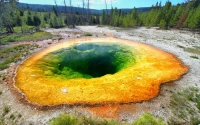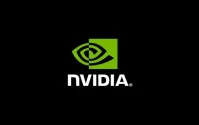Okay, folks, buckle up, because this is the kind of news that makes my circuits hum with excitement! We're not just talking about another incremental upgrade or a slightly faster processor. We're talking about using AI to peel back the layers of our planet and reveal secrets hidden beneath our very feet.
The story? Researchers have used artificial intelligence to map over 54,000 earthquakes near Italy’s Campi Flegrei volcano, one of the most dangerous in the world, and what they found is absolutely mind-blowing: a previously hidden, massive ring-shaped fault outlining the caldera.
The Earth Speaks, AI Listens
Think about it: for centuries, we've relied on traditional methods, painstakingly analyzing seismograms to understand earthquakes. But these new AI systems? They can sift through mountains of data, recognizing tiny, overlapping signals that older methods simply missed. It’s like going from listening to music on a crackly AM radio to hearing it in crystal-clear surround sound. And the implications? They’re seismic, pun intended.
The AI-generated map precisely traces the ring fault, even extending offshore. "Our Italian colleagues were surprised to see the ring so clearly," said Xing Tan, a Stanford University doctoral researcher. What this means is a clearer picture of stress zones within the caldera. This isn't just about understanding this one volcano; it's about developing a tool that can be applied to restless volcanic systems around the globe. Imagine, if you will, the possibilities...
This discovery is more than just a geological find; it’s a testament to the power of AI as a tool for scientific discovery. It’s like the invention of the telescope, you know? Suddenly, we can see things we never thought possible. We’re not just observing the surface; we’re peering into the very heart of our planet. What other hidden structures are waiting to be revealed? What secrets about earthquake dynamics and volcanic eruptions will AI unlock next?
And okay, yes, I know what some of you might be thinking. We’ve seen headlines like, "Earthquake rupture velocity and stress drop interaction in the Campi Flegrei volcanic caldera" \[sic]. Sounds terrifying, right? Like we're all doomed? But I see it differently. I see it as knowledge is power. The more we understand these forces, the better prepared we can be.
The deepened catalog shows two long faults converging under Pozzuoli, a town on the caldera’s north side, raising concerns for stronger shaking in a shallow, urban setting. An earthquake in the magnitude 5 range is not out of the question, the researchers emphasize. But for the first time, the underlying geologic structures responsible for that danger are now clearly visible.

But here's the thing that really grabbed me: the same analysis highlights a strictly shallow band of activity, all above about 2.5 miles, with no sign of upward-moving magma. That picture points to pressurized fluids and faults as the drivers for now. It's like, the Earth is whispering its secrets, and AI is finally giving us the ability to hear them clearly.
Now, a moment of ethical consideration, because with great power comes great responsibility, right? This technology could be used for resource extraction, for example, in ways that could harm the environment. We need to ensure that these tools are used for the benefit of humanity and the planet, not just for profit.
Campi Flegrei rises and sinks in pulses called bradyseism, slow ground up and down driven by pressure changes in the subsurface. Since April 2025, the average uplift has held near 15 millimeters per month. Uplift of about 0.6 inches each month adds stress to faults and to buildings. The ring fault alignment suggests that any future bursts of shaking may circle the uplifted zone.
Think about the implications for urban planning. Imagine cities designed to withstand seismic activity, built with a deep understanding of the underlying geology. We can build smarter, safer, and more resilient communities. What if we could predict earthquakes with enough precision to save countless lives? It’s not just a dream; it’s a possibility within our reach.
The new map sorts scattered dots into clear lines, which lets engineers estimate the realistic range of shaking a given fault can produce. Those estimates have direct uses in building checks and emergency drills. A better grasp of where shaking is likely helps planners place shelters, ambulances, and road clearances.
This is the kind of breakthrough that reminds me why I got into this field in the first place. When I first read the news about this, I honestly just sat back in my chair, speechless. This isn't just about science, or technology; it's about hope. It's about the potential to unlock the mysteries of our planet and build a better future for all.
A New Era of Earth Understanding Dawns
AI is not just a tool; it's a partner in our quest to understand the universe. And with each new discovery, we get one step closer to unlocking its secrets. The future is bright, folks. The future is bright.










